The Chinese Nationalist Party (KMT) caucus yesterday urged the government to allocate a part of the budget for the second stage of the Forward-looking Infrastructure Development Program to installing air-conditioners and overhauling electricity systems at elementary and secondary schools, as people are experiencing intense heat across the nation.
The special budget for the second phase of the program totals NT$420 billion (US$14.2 billion), while it would only take a fraction of that amount — about NT$20 billion, a National Development Council estimate showed — to provide all elementary and secondary schools with air-conditioning, the caucus said.
Taipei on Tuesday recorded its second-hottest day in June since 1896, as the temperature soared to 38.4°C, while the apparent temperature was more than 40°C, caucus secretary-general Lin Yi-hua (林奕華) told a news conference at the Legislative Yuan in Taipei.
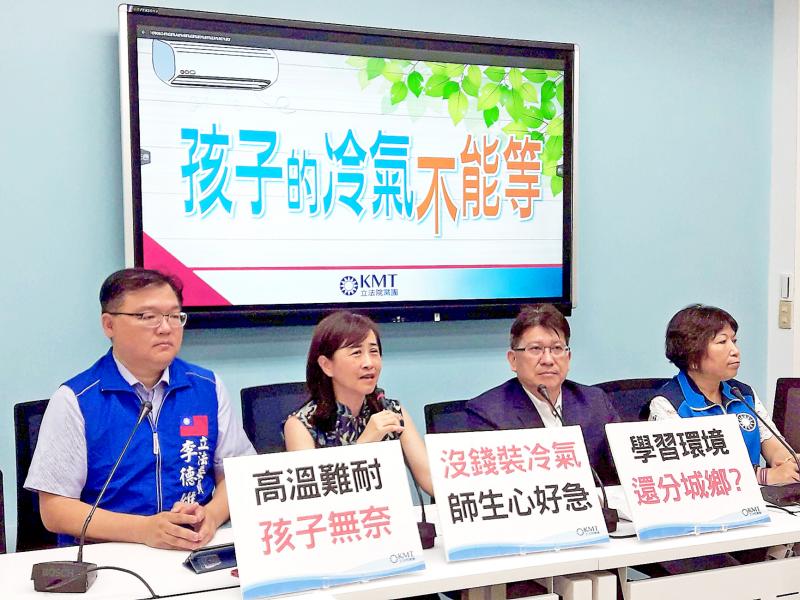
Photo: CNA
President Tsai Ing-wen (蔡英文), Premier Su Tseng-chang (蘇貞昌) and Minister of Education Pan Wen-chung (潘文忠) should turn off the air-conditioners in their offices for several hours to experience the “appalling” learning environments many students are in, Lin said.
Lawmakers last year held a meeting with parents, school administrators and Ministry of Education officials over the issue of air-conditioning, during which ministry officials said that some schools would have to make do with electric fans, she said.
This showed that the central government was aware that some local governments lack the funds to install air-conditioners at schools, so it should make installing air-conditioners a central government policy, Lin said.
The Cabinet should earmark part of the special budget for the infrastructure program to install air-conditioners at schools nationwide and improve their power systems to ensure safety, she said.
KMT Legislator Lin Szu-ming (林思銘), who represents Hsinchu County, said that some classes in schools have raised enough money from parents to install air-conditioners, while others have not.
This has resulted in “one school, two systems” or, on a broader scale, “one county, two systems,” he said.
The ministry last year used only 66 percent of its budget under the infrastructure program, so it should definitely list air-conditioners as a budgetary item for the program’s second phase, Lin Szu-ming said.
This way, local governments would be able to request funds from the ministry after determining the amount of money needed to install air-conditioners, he said.
“If the government is stingy and does not want to install air conditioners at schools, it can build more prisons later,” KMT Legislator Sandy Yeh (葉毓蘭) said.
With the apparent temperature in Taipei reaching 46°C yesterday morning, air-conditioners should be a basic requirement for schools, she said.
Former Singaporean prime minister Lee Kuan Yew (李光耀) in an interview attributed Singapore’s success to air-conditioners, and Taiwan should likewise see merit in the idea, she added.
“If you must save money, do not save on education; if you must suffer, do not let the children suffer,” KMT Legislator Lee De-wei (李德維) said.
Due to the COVID-19 pandemic, some schools were resigned to leaving classroom windows open to boost ventilation even when they were using air-conditioners, Lee said.
This has caused some schools to be fined for exceeding the electricity cap that the Ministry of Economic Affairs set on them, he said, calling on the education ministry to pay for the fines using its share of the special budget.
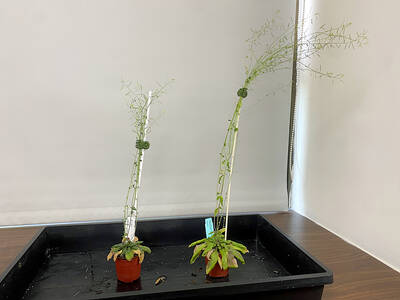
Taiwanese scientists have engineered plants that can capture about 50 percent more carbon dioxide and produce more than twice as many seeds as unmodified plants, a breakthrough they hope could one day help mitigate global warming and grow more food staples such as rice. If applied to major food crops, the new system could cut carbon emissions and raise yields “without additional equipment or labor costs,” Academia Sinica researcher and lead author the study Lu Kuan-jen (呂冠箴) said. Academia Sinica president James Liao (廖俊智) said that as humans emit 9.6 billion tonnes of carbon dioxide compared with the 220 billion tonnes absorbed
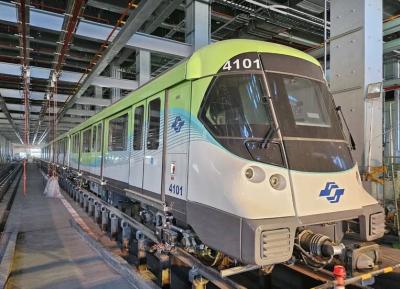
The Taipei Mass Rapid Transit (MRT) Wanda-Zhonghe Line is 81.7 percent complete, with public opening targeted for the end of 2027, New Taipei City Mayor Hou You-yi (侯友宜) said today. Surrounding roads are to be open to the public by the end of next year, Hou said during an inspection of construction progress. The 9.5km line, featuring nine underground stations and one depot, is expected to connect Chiang Kai-shek Memorial Hall Station to Chukuang Station in New Taipei City’s Jhonghe District (中和). All 18 tunnels for the line are complete, while the main structures of the stations and depot are mostly finished, he
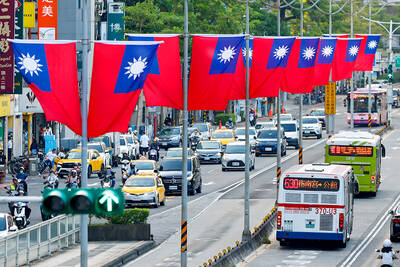
Taipei is to implement widespread road closures around Taipei 101 on Friday to make way for large crowds during the Double Ten National Day celebration, the Taipei Department of Transportation said. A four-minute fireworks display is to be launched from the skyscraper, along with a performance by 500 drones flying in formation above the nearby Nanshan A21 site, starting at 10pm. Vehicle restrictions would occur in phases, they said. From 5pm to 9pm, inner lanes of Songshou Road between Taipei City Hall and Taipei 101 are to be closed, with only the outer lanes remaining open. Between 9pm and 9:40pm, the section is
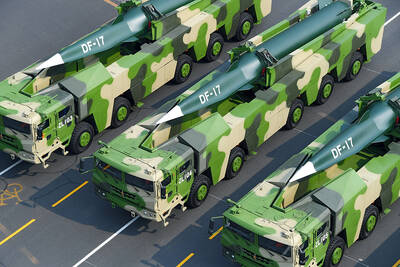
China’s plan to deploy a new hypersonic ballistic missile at a Chinese People’s Liberation Army Rocket Force (PLARF) base near Taiwan likely targets US airbases and ships in the western Pacific, but it would also present new threats to Taiwan, defense experts said. The New York Times — citing a US Department of Defense report from last year on China’s military power — on Monday reported in an article titled “The missiles threatening Taiwan” that China has stockpiled 3,500 missiles, 1.5 times more than four years earlier. Although it is unclear how many of those missiles were targeting Taiwan, the newspaper reported